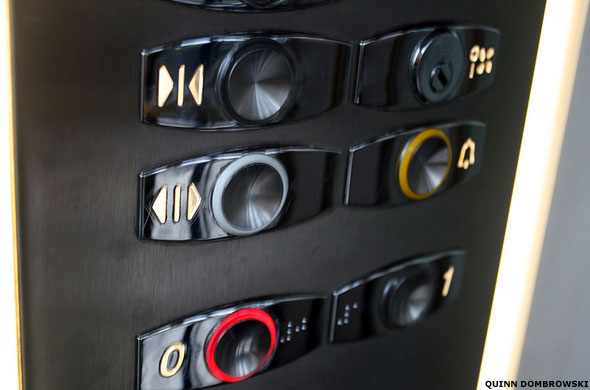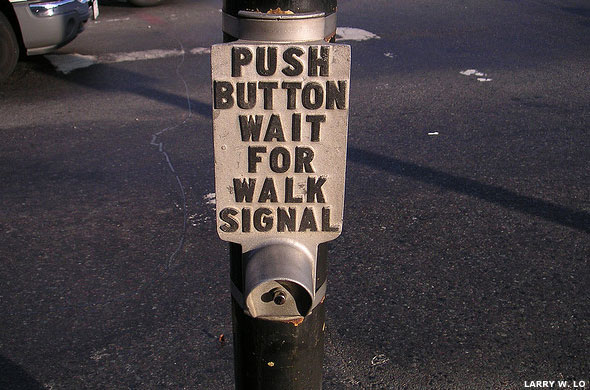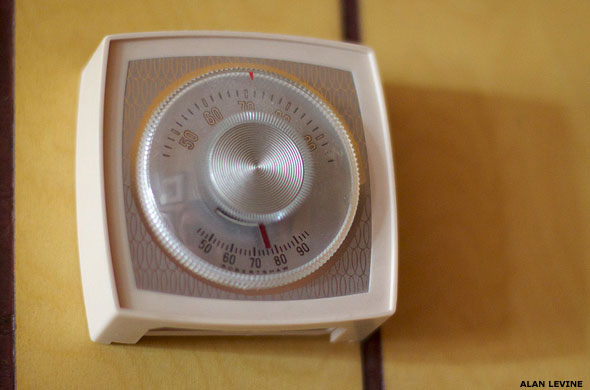I thought this may be indeed appropriate as some people are of the opinion that Feminism stands for "Equality" which is ofcourse the biggest lie ever told, so have to demonstrate that continuously and endlessly. To match that delusion, here we have some exact same actions and functions that people believe work but actually are just for show or complete the delusion..
If you are a feminist sympathiser, this may be a lesson you may want to learn and allow the brain to absorb..
5 Things You Think Work, But Actually Don’t

NEW YORK (MainStreet) – Most people are well aware of the placebo effect as it pertains to medicine. The idea is that simply thinking that a treatment will cure your symptoms is sometimes enough to make that treatment take effect. For instance, a patient who thinks he’s taking Advil for a headache may see his headache go away even if he’s swallowing a sugar pill meant to look like a painkiller. The effect is powerful enough that control groups in scientific studies of a treatment’s effectiveness will be given a dummy treatment to control for the effect.
But the placebo effect is by no means limited to medicine. In our daily lives we constantly encounter situations where products or services don’t work as promised. Yet far from stomping off to complain to someone, we instead come away convinced that the button we were pressing was doing exactly what it said it would. If a button says it will close the elevator doors but doesn’t appear to have the desired effect, we still find a way to convince ourselves that it was doing what it said it would.
“Don't assume self-delusion is always willful or conscious,” says David McRaney, author of You Are Not So Smart, a book about self-delusion. “We often engage in something called confabulation, which is basically making up a story we can believe in to explain away behavior we don't understand… We are very good at pattern recognition, and whether or not we have the story correct as to what is causing the pattern, we naturally learn to associate cause and effect.”
In other words, if the button says it will close the elevator doors, and the elevator doors don’t close until we’ve been pushing it for 20 seconds, we still manage to convince ourselves that our actions brought about the outcome. It’s just like the guy who takes the sugar pill labeled “Advil” – when the headache goes away on its own after a couple of hours, he convinces himself that it was the pill that did the trick.
Here a few examples of how this phenomenon affects us on a daily basis.

The Elevator “Close Doors” Button
Let’s start with the most obvious example: That pesky “close doors” button on the elevator. It’s a fairly well-established fact that on most elevators it’s what essentially amounts to a dummy button.
But it’s not as if elevator manufacturers are installing an extra button just to give you an illusion of control. Indeed, McRaney says the button can be activated, but only by certain people.
“The close buttons don’t close the elevator doors in most elevators built in the United States since the Americans with Disabilities Act,” explains McRaney. “The button is there for workers and emergency personnel to use, and it only works with a key.”
Sure, they could put a sign on the panel explaining the situation to elevator riders, but as McRaney points out, it’s hard to justify the time and money it would take. And besides, we’d probably keep pressing it anyway, convinced that this time it will work.

“HD” TV
We’re not suggesting that HD TVs aren’t really high-definition, though the various technical terminology might make it hard to determine just how good the picture quality really is. But for some people, simply seeing the “HD” label on the TV is enough to convince them that the picture is better, even if they don’t have the proper connection or they’re not watching an HD channel. Simply being told that it’s an HD picture is enough to convince them that the picture is better, and it isn’t until their grandkids come over and show them how to find the HD channels that they realize they’d been deluding themselves.
This isn’t just anecdotal, though. Dutch scientists conducted a study in 2009 in which 60 people were shown an identical video clip on identical TVs. However, half of them were told that the clip would be in high-definition, and the scientists even attached an extra-thick cable to the back of the TV to complete the charade. The control group was told to expect a normal DVD image.
Afterwards they were asked to describe the picture quality. You can imagine which group thought it was watching the nicer picture.
Of course, at this point HD TVs are ubiquitous enough that most people know when they’re seeing a high-definition picture or not. And as one of the scientists explained to New Scientist magazine, the gap between standard definition and high definition is smaller in Europe than it is in the U.S., so it wouldn’t be as effective here.
Still, it’s a good reminder that an assurance that something is “high quality” doesn’t just make it more likely that you’ll buy the product – it may also subtly influence your enjoyment of it.

Walk Signal Buttons
Many cities and towns have buttons at crosswalks that allow a pedestrian to speed up the arrival of a walk signal. And in many places, they do exactly what they promise to do.
But not everywhere.
The City of New York admitted several years ago that most of the “push button, wait for walk signal” buttons were no longer active, having long ago been replaced by automated systems that keep all the lights on a set timer. That makes them placebo buttons just like the close door buttons on an elevator.
“Just as with the elevators, it would be expensive to replace or remove all of the non-functioning buttons or to inform the public through some sort of media campaign,” explains McRaney. “There is no obvious harm in letting the people in your town keep impotently jamming crosswalk buttons.”
And many people will keep pushing away – perhaps a holdover from a time when they remember the buttons working, or perhaps because occasionally they’ll get lucky and the light will change right after they push.
Again, in many municipalities these buttons actually do work. In 2008, an investigation by Canada.com found that there weren’t any such placebo buttons in Victoria, Canada, though city officials admitted that the buttons varied in effectiveness.
Butt-Toning Shoes
In the case of elevator and walk signal buttons, there’s no deliberate deception involved – technology just changed, and nobody bothered to inform the people who were still pressing away in vain. But sometimes you have the classic case of a company making claims that it can’t back up.
Case in point: Reebok (Stock Quote: RBK) was just ordered by the Federal Trade Commission to pay $25 million in refunds for claiming that its “toning” shoes would strengthen and tone the thighs and butts of people who wore them. The FTC also banned the company from making similar claims in future advertisements.
The decision is a potential shot across the bow of other companies marketing similar shoes, whose rounded soles supposedly make your thigh and butt muscles do more work as you walk. Despite the big claims by companies like Reebok and Skechers, some experts are skeptical; USA Today last year quoted a professor of medicine who called such claims “utter nonsense” and suggested that their only effect could be to destabilize the Achilles tendon.
Despite these doubters, many customers are quite pleased with their purchase. In a statement responding to the FTC decision, a Reebok spokesman insisted that the company had received “overwhelmingly enthusiastic feedback from thousands of EasyTone customers.” And while that’s probably a bit of corporate over-exaggeration, we don’t doubt that many customers did indeed come away feeling like the shoes had improved their butt. Maybe the shoes really did the trick. Or maybe they just thought it did.

Office Thermostats
We hate to break it to you, but big companies aren’t just going to let a chilly employee crank the heat up whenever he or she pleases. But if they simply locked the thermostat or put the controls out of reach, the employees would constantly complain.
The solution: A thermostat that doesn’t actually do anything but placate the chilly masses.
“In many offices the controls on the wall don't do anything,” says McRaney. “Some bosses and landlords feel like they can't trust people not to fiddle with the temperature all day and thus cost them money, so they install dummy thermostats which give people the illusion of control. They work really well, as most people fool themselves into believing they feel the change.”
When pressed, most technicians tasked with installing the devices admit that they’re merely window dressing. A 2003 investigation by The Wall Street Journal quoted one HVAC technician who estimated that 90% of office thermostats were completely fake (though other technicians gave lower estimates).
We haven’t seen any study confirming that people feel warmer after fiddling with these props. But let’s be honest: If they didn’t work, offices wouldn’t bother installing them.










